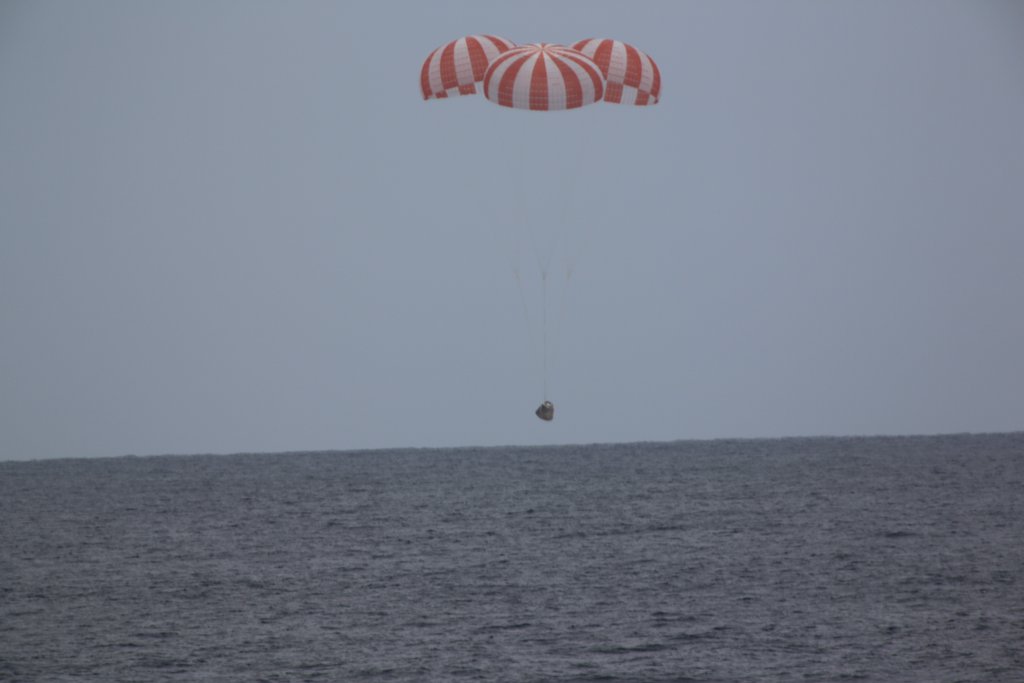
SpaceX is pretty serious about this whole spacecraft reusability thing.
The California-based company landed the first stage of its Falcon 9 rocket for the fifth time early Monday morning (July 18), during the launch of its robotic Dragon capsule toward the International Space Station (ISS) on a cargo mission for NASA.
This fall, SpaceX plans to refly one of its landed Falcon 9 rockets for the first time — and a Dragon capsule should make history by launching on a repeat ISS resupply mission shortly thereafter, a NASA official and a SpaceX representative said during a postlaunch news conference Monday. [How SpaceX's Dragon Space Capsule Works (Infographic)]
"I think we're looking at SpaceX-11," said Joel Montalbano, NASA's deputy manager of ISS utilization, referring to the 11th resupply mission the company will fly with Dragon and the Falcon 9. (Monday's launch kicked off SpaceX-9.)
"I thought it was 11 or 12 — something like that," replied Hans Koenigsmann, vice president of flight reliability at SpaceX. "So, not too far from now."
SpaceX-11 is currently scheduled to lift off from Florida's Cape Canaveral Air Force Station in February 2017, and SpaceX-12 is slated to launch two months later, according to Spaceflight Now.
Dragon returns to Earth in one piece, making a parachute-aided splashdown in the ocean. This capability distinguishes Dragon from the other resupply vessels that currently fly to the ISS — Orbital ATK's Cygnus spacecraft, Russia's Progress freighter and Japan's H-II Transfer Vehicle — all of which burn up in the planet's atmosphere when their missions are done.
Get the Space.com Newsletter
Breaking space news, the latest updates on rocket launches, skywatching events and more!
SpaceX has retrieved every Dragon capsule that has come back from the ISS, but the company has yet to refly one.
"The whole goal is to lower the cost of space travel and space transportation," Koenigsmann said of SpaceX's commitment to reusability. "Ultimately, I think we will enable lower transportation costs and provide much cheaper access to space based on that."
Along those lines, the company also aims to retrieve and reuse the payload fairings that encase satellites during launches, he added.
"We've been working on that," Koenigsmann said. "There are going to be modifications on the fairing, and then we're going to test this out again. I don't think I have a schedule on that; it's going to be a couple more missions until we can work that out."
SpaceX is also developing a crewed version of Dragon that is scheduled to begin flying NASA astronauts to and from the ISS next year.
Follow Mike Wall on Twitter @michaeldwall and Google+. Follow us @Spacedotcom, Facebook or Google+. Originally published on Space.com.
Join our Space Forums to keep talking space on the latest missions, night sky and more! And if you have a news tip, correction or comment, let us know at: community@space.com.

Michael Wall is a Senior Space Writer with Space.com and joined the team in 2010. He primarily covers exoplanets, spaceflight and military space, but has been known to dabble in the space art beat. His book about the search for alien life, "Out There," was published on Nov. 13, 2018. Before becoming a science writer, Michael worked as a herpetologist and wildlife biologist. He has a Ph.D. in evolutionary biology from the University of Sydney, Australia, a bachelor's degree from the University of Arizona, and a graduate certificate in science writing from the University of California, Santa Cruz. To find out what his latest project is, you can follow Michael on Twitter.









